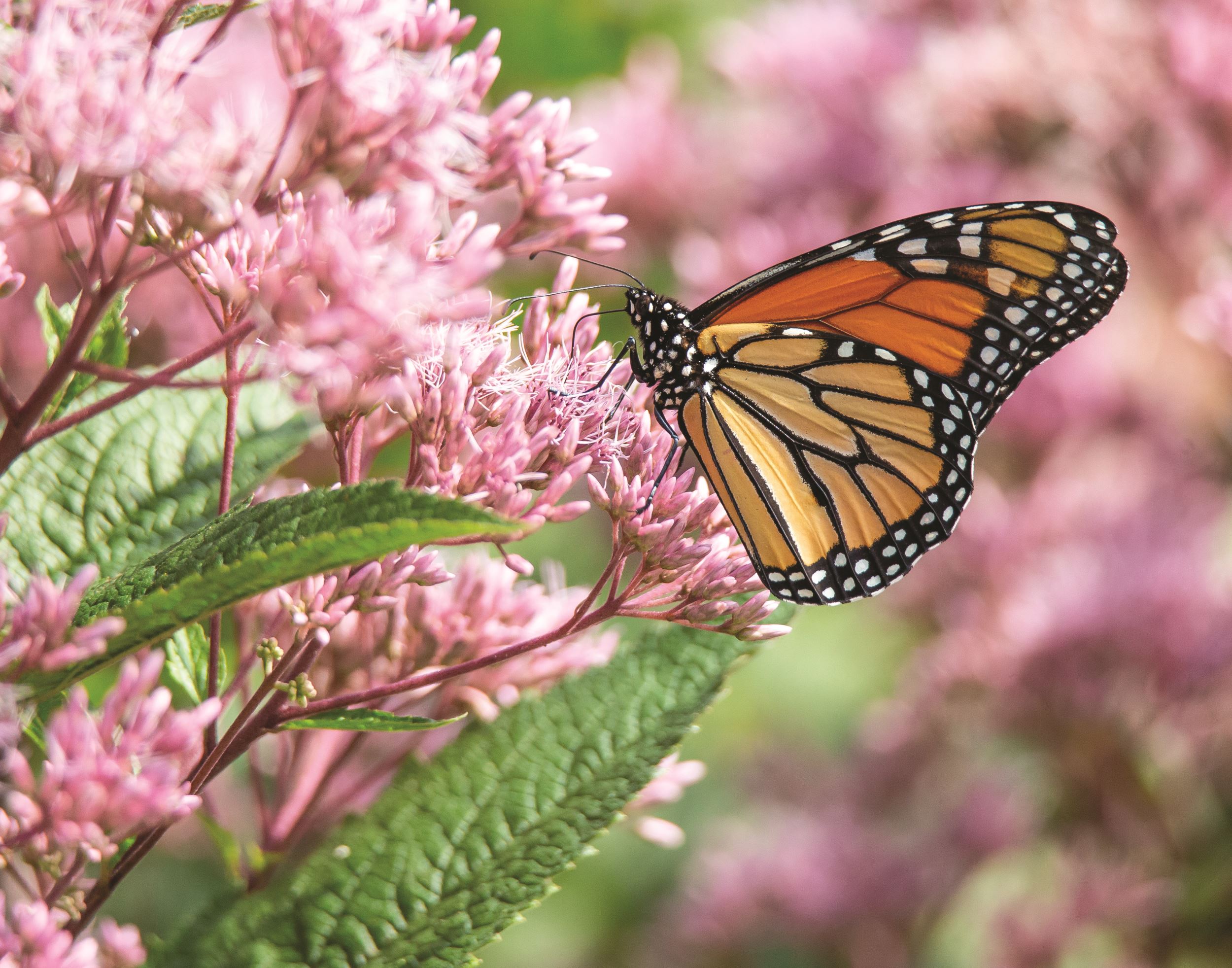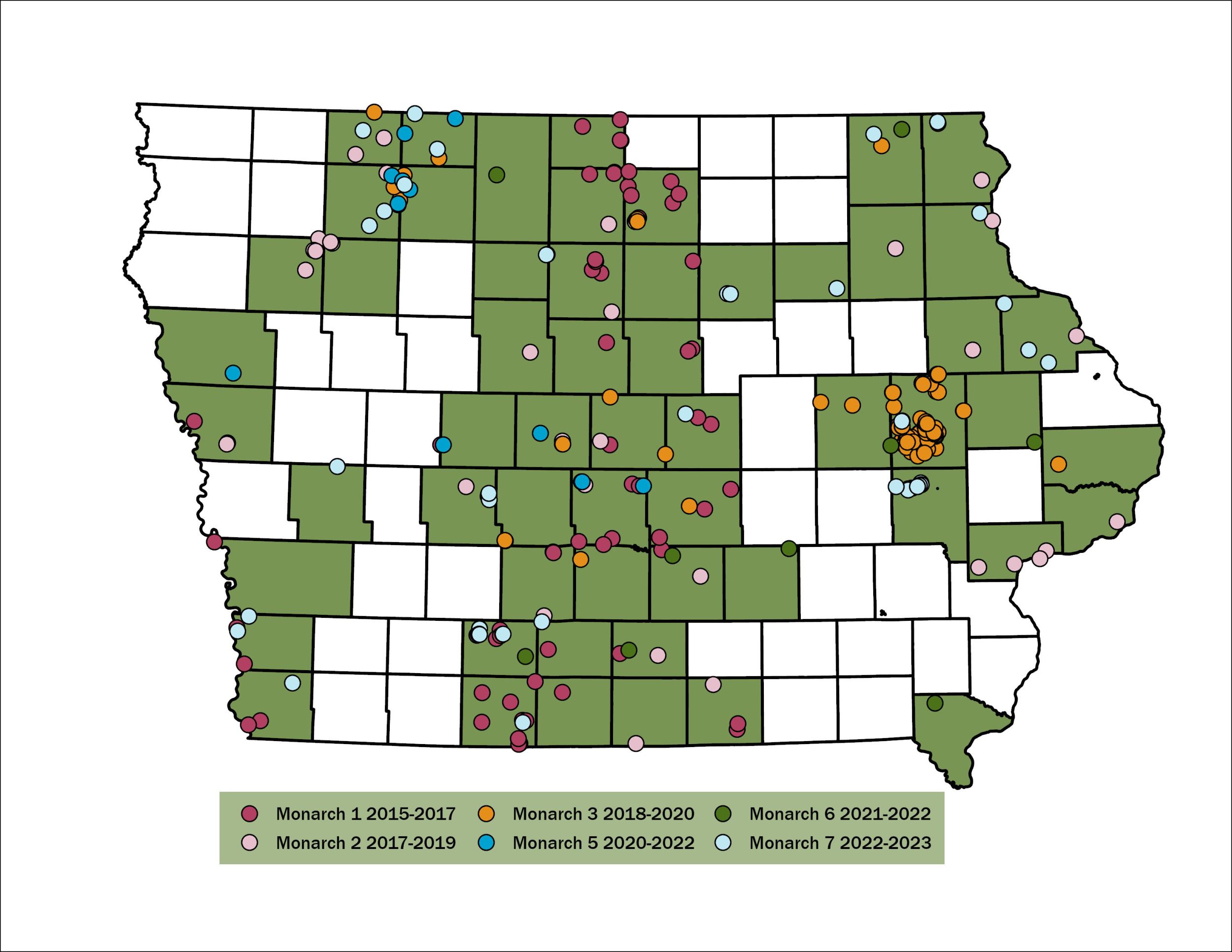Monarch Butterfly Listed as Endangered Species by IUCN
Posted on July 27, 2022 in Blog
 Photo credit Deb Shoning
Photo credit Deb Shoning
Researchers and homeowners are seeing fewer and fewer distinctive orange wings make their hallmark annual migration. As of last Thursday, the monarch butterfly joined the International Union for Conservation of Nature’s (IUCN) red list as an endangered species. While the designation doesn’t have the same effect as if the butterfly had been listed as federally endangered under the USFWS Endangered Species Act, it will still generate discussion about the multiple threats the species faces.
Monarch butterflies migrate up to 2,500 miles to their winter habitat in Mexico and California and return to areas throughout the U.S. and Canada during the summer breeding season. Illegal and legal logging has destroyed a substantial amount of the monarch’s winter habitat, and their summer habitat is likewise threatened by herbicide spraying and development. Wildfires and pesticides that indiscriminately kill insects have also been identified as culprits. To make matters worse, the monarch's sole food source, milkweed, is widely regarded as a pesky lawn weed, diminishing the availability of this essential plant.
To put this decline in perspective, the smaller Western population has declined an estimated 99.9% over the past 40 years and the larger Eastern population declined an estimated 84% between 1996 and 2014. An estimated 22% to 72% of total population loss occurred in the past decade alone. Researchers in California reported fewer than 29,000 individuals wintering in the state, compared to approximately 4.5 million in the 1980s. The situation is dire: “concern remains as to whether enough butterflies survive to maintain the populations and prevent extinction,” an IUCN press release said.
A lack of data substantially hinders efforts to understand the scope of the threat to monarchs and how to effectively boost their population numbers. The Integrated Monarch Monitoring Program (IMMP) uses community science to inform conservation efforts. Volunteers who attend either in-person trainings or watch a series of online training videos are well on their way to becoming monarch conservationists. During an IMMP training delivered by Conservation Corps Iowa’s Monarch Crew this past June, INHF staff members, interns and volunteers learned how to scientifically record data about the number of adult butterflies, monarch larva, milkweed stems and other related measurements in a given area. Data from these surveys - which can be as in-depth or casual as a volunteer desires given their availability - is used at the national level with the Monarch Joint Venture.
For the last seven years, INHF and partners used a grant from the National Fish and Wildlife Foundation (NFWF) to expand and diversify prairie on public lands like Heritage Hills Wildlife Management Area with a specific focus on helping pollinators like monarchs. This grant has helped restore more than 6,000 acres of native habitat and improve management of existing habitat on more than 24,000 acres, as shown in the map below. Individuals sites are indicated on the map where INHF has used NFWF grant funding to expand/diversify prairie habitat for pollinators. More than 6,000 acres of habitat have been restored to native habitat and an additional 24,000 acres of existing habitat have seen improved management.
Individuals sites are indicated on the map where INHF has used NFWF grant funding to expand/diversify prairie habitat for pollinators. More than 6,000 acres of habitat have been restored to native habitat and an additional 24,000 acres of existing habitat have seen improved management.
But even small-scale habitat is now critical. You can make a difference by planting or refusing to pull milkweed and early blooming flowers in your yard. Together, we can work to restore essential monarch habitat and food sources to save these iconic winged pollinators.